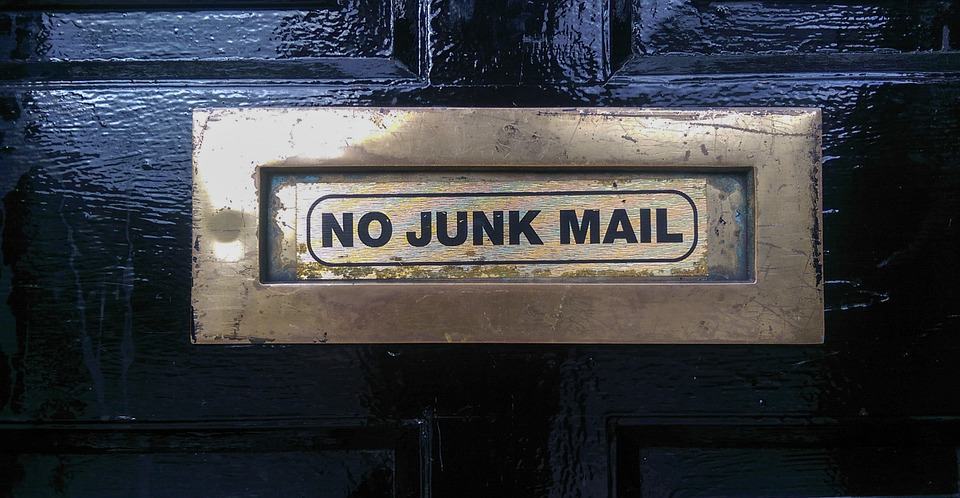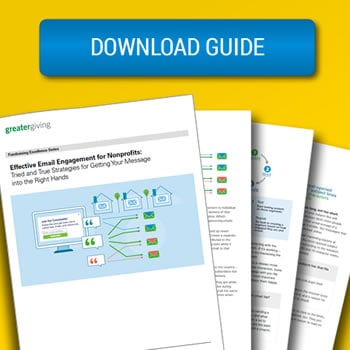
This post is the seventh in a series designed to teach the fundamentals of email marketing for nonprofits. These posts are based on the Effective Email Engagement for Nonprofits: The definitive guide to better nonprofit email marketing. Each post focuses on an element of conducting an email marketing campaign, from crafting the email to measuring recipient responses and adjusting your email approach accordingly.
What’s so bad about the junk folder?
If your emails are routinely marked as spam by recipients, it can affect something called your sender reputation—a score assigned to you by ISPs (Internet Service Providers) that rates how trustworthy of an email sender you are. A very poor sender reputation could lead to your emails ending up in recipients’ junk folders, or screened out completely before they can see it.
There are many free services that will let you check your sender score for free. As you’re working on your email program, here are some basic things you can do to ensure all your email goes to the inboxes where it will inspire action.
Write subject lines that get opened
Paying attention to the craft of your email can keep it out of the spam folder—and engages more readers. The more recipients open your emails, the better your sender score.
Avoid subject lines that sound spammy. For example, don’t use words like “free” or “guaranteed,” and especially the word “donation”—even if you’re asking for a donation in the email. See some of our other posts on writing subject lines. Everyone’s asking for stuff these days, and people will avoid your emails if all you do is ask for things.
Give recipients an easy exit
Though it sounds counter intuitive, giving email recipients a way to get off your list is better for your nonprofit in the long run. Someone who’s trapped on an email list—that is, there’s no obvious “unsubscribe” link—is more likely to send it to the spam folder (and hurt your sender score).
The fact is, you don’t want people getting your emails who don’t want them. Let them get off the ride before they tell their ISP that your mail is junk mail.
Providing a way to “opt out,” generally a link to unsubscribe, is a requirement of CAN-SPAM laws.
And make sure your unsubscribe link is obvious! A lot of nonprofits are starting to put the link at the top of each email to make it as easy as possible.
Maintain your recipient list
Another important component of your sender reputation is how many email addresses bounce.
What’s a bounce? If you send mail to email addresses that are inactive or don’t exist, your email gets bounced back—and too many bounces has a negative impact on your sender score.
Maintain your email list by removing dead accounts from time to time. Most email software will monitor email addresses that bounce so you can remove them.
Recipients that have never opened your emails are also good to take off the list. They aren’t doing your sender score any favors.
Email consistently

A good way to prevent bounces and unsubscribes? Email fairly consistently, so recipients remember who you are.
If you stop sending email for months at a time, even the people who signed up for your list at one point may forget they did. After a period of non-communication, you may find people unsubscribing enmasse, thinking they were added to yet another list they didn’t want—and that’s not good for anyone.
Send out a short update from time to time to remind them you’re still there.
Only send email to people who signed up for it
Don’t simply add email addresses to your list! According to the CAN-SPAM laws, email senders are required to get permission from an addressee before adding them to a list. Besides, nobody likes getting email they didn’t ask for. It’s like having an uninvited guest barge into your house. People treasure the privacy of their email inboxes, and they won’t hesitate to send you to spam.
Have a list of people who might be a good fit for your list? Simply send an email recipients inviting them to sign up for your newsletter, and they can decide on their own. (Check out some of our tips for writing engaging emails that would inspire someone to get involved with your nonprofit!) Taking the extra measure prevents an unsuspecting recipient from tossing you in the junk folder.
